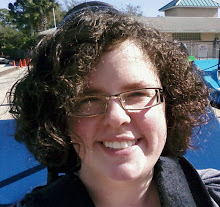 Illuminate: This week in studio as well as in drawing with Suzanne, we talked a lot about illumination. With water coloring, lighting is important. Lighting can be portrayed by using different brush strokes or different amounts of color and water. In studio, we used illumination with our stories. For the artifacts we created, we had to illuminate and elaborate on our stories through an object. Some created simple objects, while others became very abstract with the interpretation and use of materials. We also talked about illumination in the way that the Egyptians used gold points on the tips of pyramids to symbolizing the light from the sum coming down to the four corners of the earth, much like a god.
Illuminate: This week in studio as well as in drawing with Suzanne, we talked a lot about illumination. With water coloring, lighting is important. Lighting can be portrayed by using different brush strokes or different amounts of color and water. In studio, we used illumination with our stories. For the artifacts we created, we had to illuminate and elaborate on our stories through an object. Some created simple objects, while others became very abstract with the interpretation and use of materials. We also talked about illumination in the way that the Egyptians used gold points on the tips of pyramids to symbolizing the light from the sum coming down to the four corners of the earth, much like a god.

Idiom: An idiom, I would define as an object or word with a deeper meaning than is expressed. The artifacts from the fairy tales could be characterized as an idiom. The abstractness of many of the artifacts expressed that there is some deeper meaning not shown in just the object itself. For my artifact, I used colors such as: red, black, and white, to represent different aspects of the story.
Material: Materials used in a building or landscape can make difference between appealing and appalling. There were many different materials used for the artifact projects ranging from fabric material to plastic wrap. The different materials and their quality can either make or break a building. In the late twentieth century, architects and engineers took particular delight in making structures do more and more work with less and less material, seemingly a defiance in gravity, while showing the structure more clearly (Roth 25). For the project to build a table or chair for Pat, we only had a 4’ x 8’ sheet of chipboard to work with. We realized that by cutting away from positive space that is unnecessary can give you more material to work with. Stability is key when building something that can be used for many different reasons or that will last for a very long time.
 Commodity: Sir Henry Wotten said in his book, The Elements of Architecture: “In architecture, as in all other operative arts, the end must direct the operation. The end is to build well. Well-building has three conditions: commodity, firmness, and delight.” (Roth 11) How is the building or object going to be used is the big question in architecture, otherwise there is no reason to build. For Pat’s table or chair, we had to decide how he was going to use it. Does he need a shelf? Where will he sit? Should he have a work station as well? These are all questions in the building and design process. What should be added and what needs to be taken away?
Commodity: Sir Henry Wotten said in his book, The Elements of Architecture: “In architecture, as in all other operative arts, the end must direct the operation. The end is to build well. Well-building has three conditions: commodity, firmness, and delight.” (Roth 11) How is the building or object going to be used is the big question in architecture, otherwise there is no reason to build. For Pat’s table or chair, we had to decide how he was going to use it. Does he need a shelf? Where will he sit? Should he have a work station as well? These are all questions in the building and design process. What should be added and what needs to be taken away?Firmness: Firmness is characterized by the structure or way that a building or object stands up (Roth 25). Physical structure and perceptual structure are not the same, for a column may be much larger than structurally necessary in an engineering sense simply to reassure the viewer that it is indeed big enough for the job (Roth 25). In drafting, some students realized that the table or chair built for Pat will not actually hold anything without the right support.
 Delight: Architecture is the art into which we walk, the art that envelops us (Roth 55). Architecture is meant to be enjoyed. When you walk into a well-designed building, it causes you to marvel at the different elements. The lighting can make a difference in the appearance as well as the materials used. Walking into a cathedral or seeing the pyramids at Giza make you want to know more about the structure. How was it built? How is it possible to add that much detail to a structure with such limited resources and materials?
Delight: Architecture is the art into which we walk, the art that envelops us (Roth 55). Architecture is meant to be enjoyed. When you walk into a well-designed building, it causes you to marvel at the different elements. The lighting can make a difference in the appearance as well as the materials used. Walking into a cathedral or seeing the pyramids at Giza make you want to know more about the structure. How was it built? How is it possible to add that much detail to a structure with such limited resources and materials?Citation:
iStockphoto/Karim Hesha


No comments:
Post a Comment